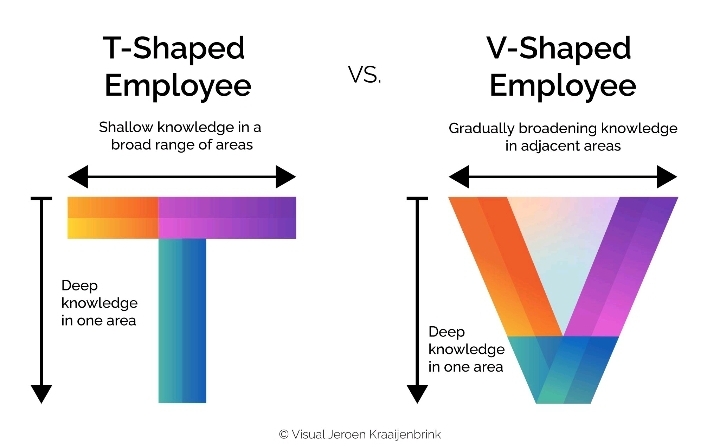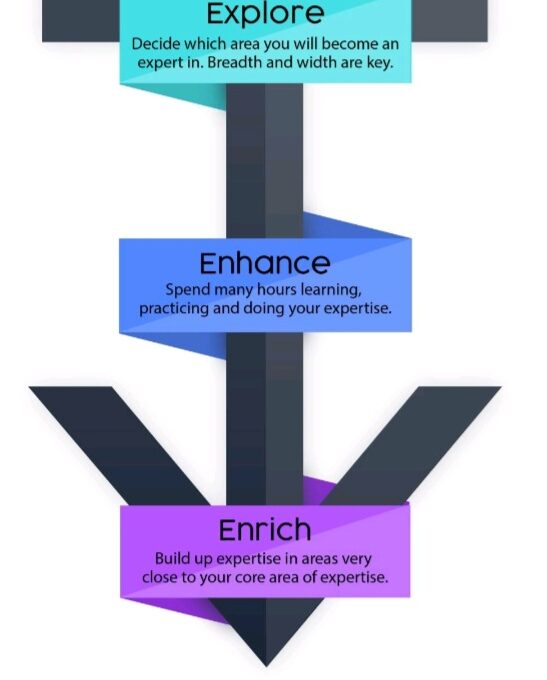T-shaped vs V-shaped path in your Analytics career
We start with learning multiple disciplines in an industry and then niche down to a specific skill that we master over the period of time to get expertise and become an authority in that space.
Typically, many including me follow a T-shaped path in the career journey where horizontal bar ‘T’ refers for wide variety of generalized knowledge / skills whereas vertical bar ‘T’ refers to depth of knowledge in a specific skill. For instance, if you’re a Data Scientist, you still do minimal Data Pre-Processing steps before doing the Exploratory Data Analysis, Model Training / Experimentation and Selection based on evaluation metrics. Although a Data Engineer or a Data Analyst, primarily works on data extraction, processing and visualization, a Data Scientist might still need to be familiar in order to get the job done on time without depending on the other team members.
Data Scientist’s vertical bar ‘T’ refers to crafting the best models for the dataset and horizontal bar ‘T’ could refer to Data processing (cleaning, transformation etc.) and visualizing the KPIs in the form of insights for the business to take informed decisions.
Strategy & Leadership consultant and author, Jeroen, comes up with a V-shaped path which makes sense in our contemporary economic situation where layoffs news are on the buzz across many MNC companies.

In terms of similarities, the author, reiterates that both models address the fact that understanding one focus area deeply and having shallow knowledge across other areas. V-shaped model refers to having one deep knowledge and a lot of adjacent knowledge areas which are not deeper but not shallow either, somewhere in between. Jeroen describes as, “It is medium-deep, medium-broad, enabling us to be versatile and agile.”
For illustration, if the Data Scientist aspires to go above and beyond the expectations, he/she can technically collaborate with Data Engineers, performs AI/ML modeling stuffs, builds reports/dashboards, generate meaningful insights, and enable end-user adoption of insights. It has a combination of hard and soft skills! Soft skills such as storytelling, collaboration with peers, project management etc., Over the period of time, as one repeats this whole process, they can get better and better (develop deeper knowledge) with model development and management, and develop adjacent soft skills to excel at work.
In my view, I think, we start with a T-shaped path and eventually, it morphs into a V-shaped career path as we put our hard-work on one skill and also develop its associated adjacent skills. And, it applies to any field that you’re in.
How long do you think it would take this transformation to attain a V-shaped path? Will this take about 10,000 hours (~a decade) as per Gladwell’s book: “Outliers” to become an expert? Maybe, yes! Sooner, the better it is!!
I’ll leave you with a three-phase approach to becoming an expert according to the author Jeroen.

Image Credits: https://www.linkedin.com/in/jeroenkraaijenbrink/
